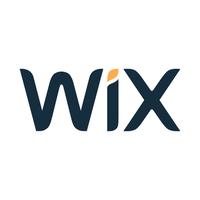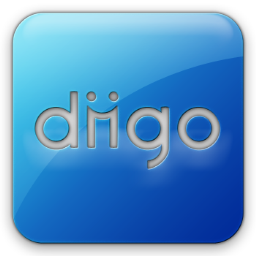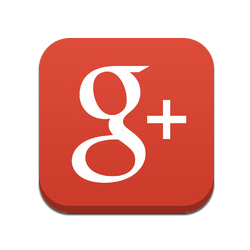#Digitalliteracy?
- Crystal Truman

- Jan 21, 2019
- 10 min read
Updated: Jan 22, 2019

DISCLAIMER: I am not a tech savvy individual. One of the (many) reasons that I was drawn to nursing as a profession is that I wanted to work with people- not with computers.
My love for my psychiatric nursing has inspired me share it with others and teach at the university level. The first step in accomplishing that goal is to further my own education and pursue a master’s degree. As psychiatric nursing is a relatively new profession, there were limited master’s level degrees available to me without becoming dual-registered as a RN prior to taking my master’s degree. When I came across the Master of Health Studies program at AU, I was excited by the prospect of learning with, and from, multidisciplinary health professionals and the online format would provide me with the flexibility to work towards my master’s degree while maintaining my full time job and juggling my young family.
So here I am, at the beginning of this journey. Excited to sink my teeth into the content and course materials, I was taken aback by my lack of digital proficiency. In the first week of the program we were invited to experiment with presenting our thoughts using different multi-media applications, as we examine who we are as professionals and how this is portrayed in social media. In week two we looked at how we will curate knowledge and digital content, while completing assignments, as we move forward. Using Microsoft Sway and Adobe Spark was a challenge the first time through, but I was happy with the results.
Where do I go when I need information?
I suppose my first step when I need information is to determine what information I need, what I will be using the information for, and what tools I have at my disposal.
It certainly is not digital, but one of the best ways I have found to gather information is to ask an expert. In my personal life, I’ll ask my mom or mother in law ‘mom’ questions. I’ll ask my sister (physiotherapist) or best friend (massage therapist) about an ache or pain I am experiencing. My brother-in-law (chef) is my go-to for a fail-proof recipe.
In my professional life, I ask experienced colleagues, whose work and integrity I respect, work related questions. I am fortunate to work with a multidisciplinary team and have daily contact with psychologists, psychiatrists, specialized nursing staff, social workers, occupational therapists just to name a few. In my experience, most ‘experts’ are happy to be recognized as such and are pleased to contribute their expertise and collaborate to problem solve. And collaboration is part of my everyday practice, this collaboration occurs face-to-face at times and between individuals who have never met at other times. Their information (for example: lab results, diagnostic imaging, medication administration records, nursing notes, psychotherapy reports) are documented, organized and stored in online computer databases like Meditech, Paris and OSCAR. Different professions can submit and retrieve information to coordinate care of their patients using these programs. Could this be an example of digital knowledge curation? Maybe I actually do know a little about this!
Like most of us in the 21st century, I generally have either a phone, laptop, desktop or tablet within reach. I utilize search engines, like Google, to answer questions quickly and easily. For example: “what does parsing mean?” In only 0.53 seconds I have 102,000,000 results! I try to avoid sites that appear to be advertisements and gravitate towards those that I recognize as having been a good source of information previously, recommended by someone whose opinion I value, or at least is user friendly to navigate. The amount to which I scrutinize the source and validity of the information depends on the reason the information is being collected and it’s intended use.
I can use digital search engines such as google, online scholarly resources like PubMed, my university’s digital library for accessing articles and electronic medical records and databases at work for accessing patient information, so maybe I’m not as digitally incompetent as I think. But there’s still a lot I don’t know!
Let’s start with a few definitions that I had to look up:
· Digital Content Curation: “Digital curation is the selection, preservation, maintenance, collection and archiving of digital assets. Digital curation establishes, maintains and adds value to repositories of digital data for present and future use. This is often accomplished by archivists, librarians, scientists, historians, and scholars. Enterprises are starting to use digital curation to improve the quality of information and data within their operational and strategic processes. Successful digital curation will mitigate digital obsolescence, keeping the information accessible to users indefinitely.” ("Digital Curation," 2018).
· Knowledge Curation: “The selection of a subset of information based on particular criteria that is distributed to users.” (IGI Global, N.D.)
· Synthesis: “A knowledge synthesis attempts to summarize all pertinent studies on a specific question, can improve the understanding of inconsistencies in diverse evidence, and can identify gaps in research evidence to define future research agendas. Knowledge synthesis activities in healthcare have largely focused on systematic reviews of interventions.” (Kastner et al, 2012)
· Curation Space: Believe it or not, I couldn’t find a definition of “curation space” that I found helpful. My understanding is that “curation space” refers to the program or application that a person will utilize to organize and archive their collection of information so that it is easily available to them later, or to others who share their interests. Think of it as a “digital filing cabinet”.
Now that I have some appreciation of what I will be doing, I’ll need to examine how I will be doing it.
Step One: Once information is found, it needs to be collected, stored and organized. This is accomplished using a curation space. This ensures the information will be easy to find later and can be shared with others who share your interest in the subject.
We were provided with a list of resources to explore and here is what I discovered:
(Click the names of the application to explore their website)
Word Doc – ok this one I know! I write a word document, title it, date it, save it. Then it goes in a digital folder which I can also name. Each folder can have sub folders. For example on my home PC we have a folder labelled “Financial” within that is subfolder “Taxes” and within subfolder “Taxes” is another folder for each year. Easy!

Google Doc – To use this application you must have a g-mail account. It’s easy to sign up for one. I haven’t explored this application in much depth in order to compare and contrast the differences between Google Doc and Word Doc, but at a glance they seem pretty similar. That being said, I am going to make the assumption that storing and organization of data would be done using the file system mentioned above.

G+ Collection – I’ve never heard of this one, but it appears to be an application designed especially for digital content curation! In this application, you create a board (a place to store information on a particular topic) and then ‘pin’ information to your board. You can create multiple boards, ‘follow’ other posters or other boards, and easily share this information by making it public. It sounds a lot like Pinterest to me, but more multi-media friendly…? Have I used it? No. Do I intend to check it out? Absolutely!

Google Keep notes – Never heard of this one either. From the descriptions I have read on various blogs, this application is like a collection of digital post it notes. Handy for on the go, as it is designed to work on mobile devices, but less customizable, sharable and so on than the above mentioned G+ Collection. It apparently works with other Google applications (such as the two mentioned above) is designed to transfer information from Keep Notes to a Google Doc with ease. I might use this application for recording a lecture, as it has voice recording that automatically transcribe which is cool, but I don’t think I’ll be doing my data curation assignment on this application.

Inoreader – Described as a “content reader,” this appears to be another application specifically designed for data collection/curation. It’s free to join and provides a cute animated one minute video tutorial. Being non-techy, I didn’t understand the description of what this application does or how it works, but after watching the video I think that what this site does is collect information for you. The user ‘follows’ topic of interest and this program finds matches and creates a personalized newsfeed for you- then you decide if the information is worth keeping from there. You can archive, customize, organize and share information and link it to social media sites such as Facebook, Twitter and more. I think I will explore this site before I decide if I intend to use it or not.

Webpage – I know what a webpage is. Do I know how to make one? Not even a little bit. Am I going to make one? Yes, we all are as this is our first assignment- to create a rough on-line e-portfolio. Is this slightly terrifying to any other non-tech smart people?

Diigo – Also new to me. This site describes itself as “a social bookmarking tool that enables you to search, bookmark, organize, archive, share, discuss, and annotate materials on the web. It's a useful tool for professional collaboration, student project collaboration, and for feedback and conversation between teachers and students.” (“Diigo Teaching History,” 2018). This sounds like an amazing tool. I will definitely be checking this one out.
Step Two: Now that I've chose a curation space, I can start accumulating information (aka knowledge curation!) I will need a starting point. Time to start thinking about what topics I want to explore, why I am passionate about that topic and why others might be also. Is it relevant to my field of practice/study? Do I have a target audience – Yes, my fellow MHST601 students.
Step Three: Gather information (aka digital content curation). Because content that we are collecting is digital, we can gather many different mediums to showcase the information. In addition to text documents such as journal articles, books, case studies, magazines, and new stories we can add some real punch by incorporating images, videos, blogs and vlogs, webinars, TedTalks, interviews, music, websites, links and threads, full multimedia presentations and more…. Woah, the internet has a lot of stuff on it! Now what?
Step Four: Evaluate the information that has been collected and organized and determine what is relevant (ie. parsing).
Step Five: Now that we have all this organized, handy information we must pull it all together and relate it back to our initial topic of interest to show learning and to identify areas for further exploration. This is the “synthesis” portion of our curation plan.
Step Six: Share your knowledge with the world! (Or at least your MHST601 colleagues!) What good is all that knowledge if you just keep it tucked away for yourself? By sharing we invite new and novel ideas, interpretations and worldviews to further our own learning and those around us.
Now that I have an understanding of what I will be asked to do and have broken down the steps of how I will do it (in a language that I understand!) I can really begin.
My first step, in hopes of mitigating future frustrations, is that I have chosen Wix as the application to use when building my e-portfolio. After exploring several portfolio building applications, I noted that while most of them support blogs on their own platforms, they do not allow you to import outside blogs onto their applications. In the first two weeks of this program, I have been utilizing Adobe Spark and Microsoft Sway to expand my digital literacy skills, while reflecting on the topic at hand. I have not found a way to import these blogs into my Wix e-portfolio, so I will create my synthesis blog assignments right in my my Wix e-portfolio so they can be synthesized into my midterm and final portfolio assignments.
I plan to explore Diigo and G+ Collections for my curation space. I currently use a folder/sub-folder system to organize and store data and it has worked well for me thus far. I am learning how to “link” websites to my e-porfolio and will have a curation space as part of my e-portfolio that I hope to build on throughout this degree.
In terms of the topic that I would like to explore, I am leading towards the topics that I am passionate about and have first hand experience in working with: Vulnerable / Marginalized / Stigmatized Populations and Advocacy; Mental Health and Substance Use; Aboriginal Social Histories and how they relate to health and mental health; The opiod crisis and it’s effects on first responders; Vicarious trauma in nursing; These are all broad topics, so I will need to focus on a specific idea in order not to become overwhelmed by the resources out there and then start my curation process.
So, what did I learn this week?
When I find or create information, I then need to keep it and file it in some organized manner so that it may be referenced later and shared with others as a contribution of knowledge on a topic of interest. This is the process of data curation, and I expect to use it a great deal as I progress in my Master of Health Studies degree. Creating a digital space that I can use throughout this program will be both challenging and rewarding as I develop a tool that captures my professional interests, achievements and scholarly endeavors.
As much as I consider myself to be digitally-incompetent, I realized over the course of this learning activity that I actually know how to use quite a lot of technology. I also realized the importance of curation of health information when it comes to patient care and how essential it is for multidisciplinary health professionals to be able to enter and retrieve information into a shared system in order to create a more comprehensive picture and deliver the best possible outcome.
References:
[Untitled image of electronic medical record]. Retrieved January 17, 2019 from https://www.cosmetisuite.com/cosmetisuite-electronic-medical-records.html
[Untitled photo of a mom struggling with baby while on cell phone]. Retrieved January 17, 2019 from https://www.workingmother.com/scientists-just-discovered-another-surprising-way-babies-benefit-from-having-working-moms
[Untitled photo of a smiling female physiotherapist working with senior]. Retrieved January 17, 2019 from https://businessguideottawa.ca/tips-for-finding-the-right-physiotherapist-for-you/.
[Untitled photo of multi-disciplinary professionals]. Retrieved January 17, 2019 from https://www.tandemmadrid.com/lessons/professions-in-spanish/
Digital Curation. (2018) In Wikipedia. Retrieved online January 19, 2019 from https://en.wikipedia.org/wiki/Digital_curation
Digital Curation. (2018) In Wikipedia. Retrieved online January 19, 2019 from https://en.wikipedia.org/wiki/Digital_curation
Diigo Inc. (2019). Diigo. Retrieved January 21, 2019 from https://www.diigo.com/
Google Retrieved January 21, 2019
Google. (2019). G+ Collections. Retrieved January 21, 2019 from https://plus.google.com/collections/featured
Google. (2019). Google Docs. Retrieved January 21, 2019 from www.google.com/docs/about/
Google. (2019). Google Keep Notes. Retrieved January 21, 2019 from https://keep.google.com/u/0/
Google. (2019). Google. Retrieved January 21, 2019 from
https://www.google.ca/webhp?hl=en&sa=X&ved=0ahUKEwiHrYbFkIDgAhUPCTQIHaONCpIQPAgH
https://www.wix.com/dashboard/87575188-8c42-4330-aeb0-aa3b4d3e00bf/home
Innologica Ltd. Inoreader. Retrieved January 21, 2019 from https://www.inoreader.com/
Kastner, M., Tricco, A. C., Soobiah, C., Lillie, E., Perrier, L., Horsley, T., Welch, V., Cogo, E., Antony, J., Straus, S. E. (2012). What is the most appropriate knowledge synthesis method to conduct a review? Protocol for a scoping review. BMC medical research methodology, 12, 114. doi:10.1186/1471-2288-12-114 Retrieved online January 19, 2019 from https://www.ncbi.nlm.nih.gov/pmc/articles/PMC3477082/
Microsoft. (2019). Word Online. Retrieved January 21, 2019 from https://office.live.com/start/Word.aspx#
Multiple Models of Diabetes Care [Online image]. (2018). Retrieved January 17, 2019 from https://www.endocrinologyadvisor.com/multidisciplinary-care-teams-in-diabetes-management/slideshow/3676/
Portrait of a happy male chef cook sharpening knife isolated on a white background [Online image]. Retrieved January 17, 2019 from https://www.shutterstock.com/image-photo/portrait-happy-male-chef-cook-sharpening-322555004?src=RN-7caWsZhmC246CmnbTmg-1-28
What is Data Curation? [Online Image]. (2014). Retrieved January 17, 2019 from https://health.usnews.com/health-news/hospital-of-tomorrow/articles/2014/12/29/ucla-uses-physician-informaticists-to-win-over-medical-staff
Wix.Com Ltd. (2019). Wix.com: Free Website Builder. Retrieved January 21, 2019 from



















Comments